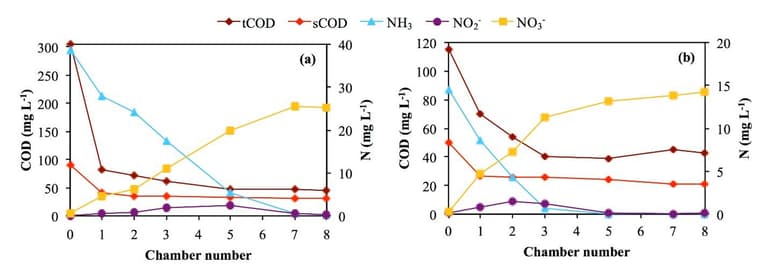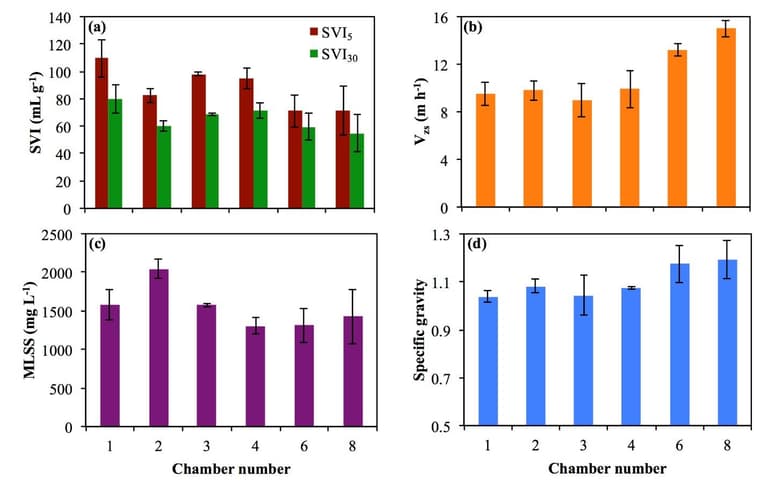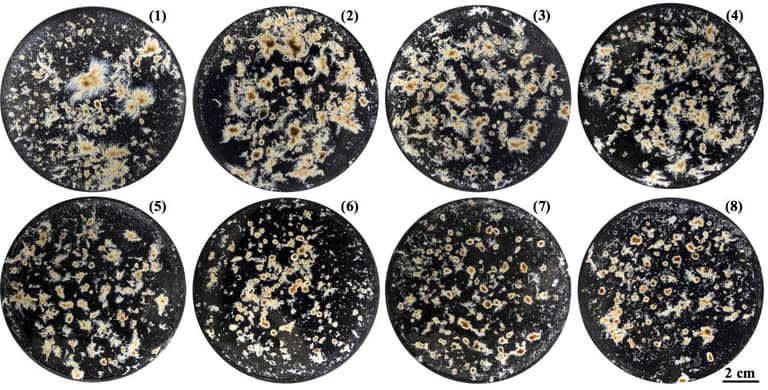Effect of Feast/Famine Conditions on Continuous Flow Aerobic Granulation
Yewei Sun - Hazen and Sawyer; Bob Angelotti, Matt Brooks - Upper Occoquan Service Authority; Zhi-Wu Wang - Department of Civil and Environmental Engineering, Virginia Tech
Last Modified Sep 14, 2022
Aerobic granular sludge provides a number of wastewater treatment advantages compared to conventional activated sludge as a result of better sludge settleability and associated potential for process intensification. However, almost all full-scale applications of aerobic granulation have been limited to sequential batch reactors (SBRs) over the past twenty years. It should be pointed out that intermittent operation of SBRs is inconsistent with the continuous flow nature of most modern, large wastewater treatment plants (WWTPs). Hence, the development of a continuous flow aerobic granulation technique is highly desired for promoting the application of aerobic granular sludge to large, full-scale WWTPs. Our previous study demonstrated that flocculent activated sludge can actually be transformed into aerobic granules by inoculating the flocculent sludge into a continuous-flow plug-flow reactor (PFR) fed with real wastewater in a domestic WWTP using a settling velocity selector. This transformation occurred even with seasonal temperature and influent quality fluctuations (Sun et al., 2019).
As concluded in a recent literature review (Kent et al., 2018), an alternating feast/famine condition and an effective settling velocity (Vs) selection pressure are two essential factors believed to promote successful aerobic granulation. While the critical role of Vs selection in aerobic granulation has been repeatedly studied in SBRs, the importance of a feast/famine operation that imparts a significant substrate gradient through a continuous flow aerobic granulation bioreactor has not been investigated. A PFR created by connecting multiple continuous stirred tank reactors (CSTRs) in series provides a very good tool to study this feast/famine condition because it provides for convenient snapshots of the feast/famine condition at various reactor detention times as flow proceeds along the flow direction. Therefore, this study was designed to use a pilot scale Plug Flow Aerobic Granulation Reactor (PAG) to evaluate sludge and process performance characteristics as flow proceeds through the internal selection pressure offered by various substrate gradient compartments which was combined with an external velocity selector to achieve sludge granulation.
Experimental Design
A PAG reactor with 128 L total working volume was built and operated at the Upper Occoquan Service Authority (UOSA), a WWTP in Centreville, VA (Sun et al., 2019). The pilot-scale PAG reactor consisted of eight CSTRs in series to create a PFR exhibiting feast/famine conditions. An external settling selector was placed at the end of the PFR to drive aerobic granulation via its settling velocity selection pressure. The selective retention of bio-particles with a settling velocity (Vs) greater than the critical settling velocity selected was achieved by adjusting the settling time in an intermittently operated clarifier with short cycle time to emulate a continuous flow process. The influent of the pilot-scale PAG reactor was UOSA's primary effluent.
The feast/famine conditions through the PFR was evaluated by collecting substrate profile samples across all eight of the CSTRs in series. Mix liquor samples were taken from each of the CSTRs to examine the sludge's phenotype changes in terms of the sludge morphology (flocculent to granular) and its settleability. Morphology was characterized by examining petri dish images for particle size distribution and circular form. Settleability was evaluated by Sludge Volume Index (SVI) and zone settling velocity (Vzs).
Results and Discussion
Substrate profiles across eight CSTR chambers
COD and nitrogen profiles are shown in Figure 1. For COD profiles, both tCOD and sCOD were measured. tCOD was measured in the supernatant after 30 minutes of sample settling and sCOD was measured after passing the sample through a 0.45 µm syringe filter. According to Figure 1, it can be concluded that the first 2 chambers provided and the feast conditions in the PAG while the remaining 6 chambers exposed the granules to the famine condition for about 6.5 hours of hydraulic retention.


Settleability variation across chambers after granulation
The settleability of sludge in each of the eight CSTR chambers was evaluated in terms of SVI and zone settling velocity (Vzs) which is shown in Figure 2a. Both SVI5 and SVI30 show decreasing trends across all eight chambers. Figure 1 suggests that the settleability and densification of sludge can be improved as the sludge develops in the famine phases of the reactor. Although SVI can be affected by a number of other variables such as sludge concentration (MLSS), the values of Vzs across all eight chambers were measured, and again an increasing trend is shown in Figure 2b as the sludge is evaluated through the famine stages of the PAG. It is known that higher MLSS tends to give smaller Vzs. However, according to Figure 2c, MLSS concentrations in the eight chambers were similar, indicating that the increase trend of Vzs was most likely due to the improvement of the sludge's intrinsic settleability. According to Figure 2d, the specific gravity of sludge in the first four chambers of the plug-flow reactor were very similar, which is in line with the similar sludge settleability measured in the first 4 chambers (Figures 2a and b). When it comes to chambers 6 and 8, a higher specific gravity is observed in Figure 2d which may further explain the much better sludge settleability observed for these two chambers in Figures 2a and b.

Figure 3: Sludge morphology in chambers 1 to 8

Sludge morphology and particle size variation across chambers
One can see from Figure 3 that most of the sludge in the first two chambers had a flocculent form characterized by very different sizes and irregular shapes. This morphology is also evident from the particle size and circularity distribution shown in Figure 4. In chambers 3 and 4 of Figure 3, the large bioflocs were shifted to smaller fluffy aggregates, with some particles having been transformed to spherical granular sludge. However, most of the sludge was still in the fluffy aggregate form. It is known that bioflocs usually have lower specific gravity and thus poorer settleability than granular sludge. Hence, the dominance of bio-flocs in the first four chambers may have been responsible for the poor sludge settleability observed in Figures 2 a and b. Looking further at Figure 3, there were more sludge granules in chamber 5 than in the first four chambers, and even more granular morphology is evident in the last three chambers of the PAG.
In addition, the granules in the last three chambers were more uniform and round (Figure 4). The variation observed across chambers implies that sludge morphology may be shifting from a flocculent form in the feast zones towards granular sludge along the flow direction in the famine conditions. These observations of sludge phenotype transformation through the PAG, from flocculent to granular form, was unexpected given the short amount of hydraulic retention time provided in the overall PAG and particularly in the individual CSTR compartments.










